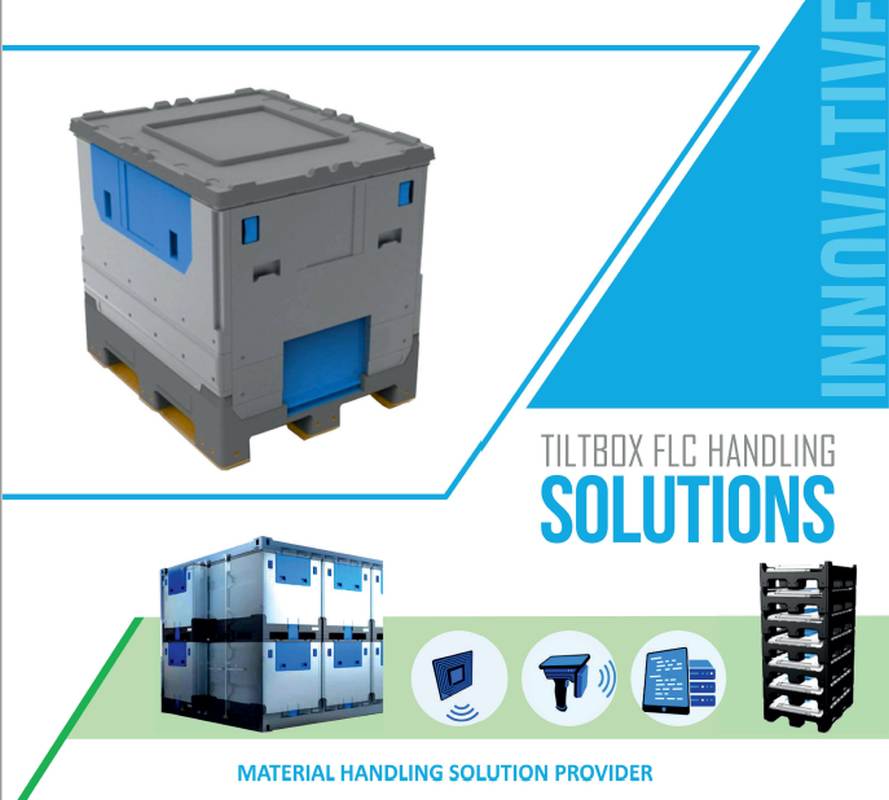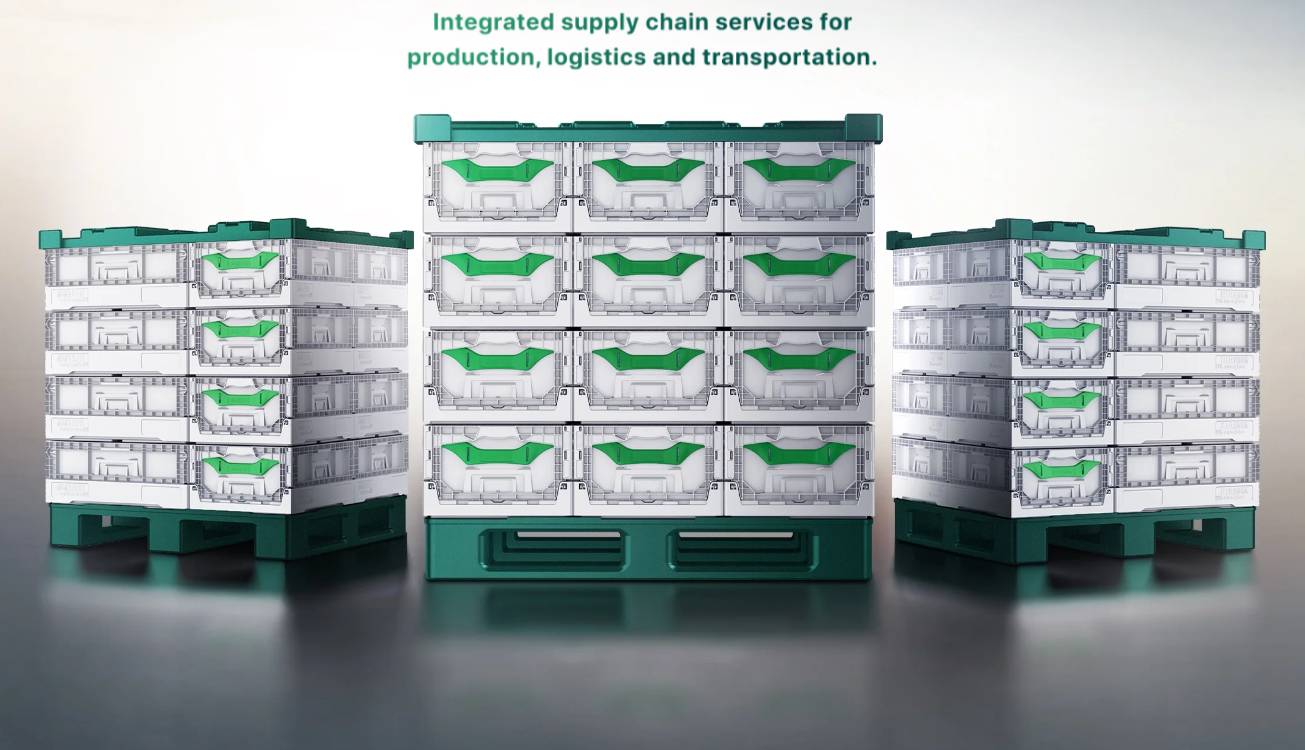

May 21, 2023
The Advantages of Foldable Crates over Nesting Crates
FOREWORD: Fixed, ‘tapered walled ’nesting crates have been used by industry for decades often because that was the only crate option available. However, in recent times many international warehousing clients are favouring the newer folding crate design, specifically considering the changing world we all live in.
DISCUSSION: The warehouse and distribution sector has taken off immensely in the last 5 years, accelerated by online shopping during the 2020/21 Covid pandemic. New, huge warehouses are being built all over the world in response to the changing consumer buying behaviour.
Furthermore, global warming, minimising single-use plastics, minimising the carbon footprint of the distribution and warehousing and reducing transportation costs plays a huge factor in today’s retail and industrial sectors.
The world has become a smaller place for business, with a manufacturer in one country exporting products and produce in hours/days to a client of corresponding warehouse in another country.
The packaging industry is reacting to this change and crates and intermediate bulk container(IBC) innovation has taken off. Folding crate designs are increasingly being adopted over the older, nesting crate models. This paper explores some of the reasons for this change and the benefits of folding crates over nesting crates.
FIGURE 1 - THE FOLDED CRATE DESIGN

FIGURE2 - THE NESTING CRATE DESIGN

From Figure 1, the reader will note that that innovative folding technology used in the Folding Crate construction fundamentally allows it to occupy much less space when empty to that of the Nested Crate design in Figure 2. This is illustrated in Figure 3 showing a stack of 10 crates for the Schematic EUO6440 model. Many other Schematic models, such as the EUO6434 will occupy significantly less space, just 60% of the equivalent nested crates in a like-for-like size comparison.
FIGURE 3 – EFFECTIVE STACKED HEIGHT OF EMPTYCRATES

The advantages of the folded crate design are not just limited to the ‘empty stacking height’ benefits. Some of the additional benefits, as realised by European and USA warehousing clients, are listed overleaf.
Space-saving: Folding crates can be collapsed or folded when not in use, allowing for efficient storage. This is particularly beneficial in situations where storage space is limited. When folded, they take up significantly less space compared to nesting crates, which still occupy a fixed volume even when stacked together.
Portability: The collapsible nature of folding crates allows for convenient transportation, especially in scenarios where the crates need to be frequently moved or used in different locations. Folded crates are therefore ideal for warehouse distribution of retail merchandise, which needs to be dispatched to retail outlets on lorry/by sea.
Versatility: Folding crates can be used in a wide range of applications, including storage, transportation, and organization. They are commonly used in industries such as retail, logistics and agriculture. Their versatility makes them suitable for various environments and purposes.
Durability: Folding crates are typically made from sturdy materials such as plastic or metal, ensuring they can withstand heavy loads and repeated use. High-quality folding crates are designed to be robust, resistant to impacts, and capable of enduring harsh conditions, which extends their lifespan.
Hygiene: Folding crates are often designed with smooth surfaces and rounded corners, making them easier to clean and sanitize. This is particularly important in industries such as food processing and healthcare, where maintaining cleanliness and hygiene is crucial.
INTERNAL WEAR, BREAKAGE AND EDGE DAMAGE OF NESTINGCRATES
Nesting crates are designed to stack inside each other, which optimizes storage space when they are empty, however, this nesting feature is also a significant disadvantage, as
a) internal crate WEAR occurs during the repeated nesting process
b) crate top edge and corner damage also occurs as the crates are mis-handled (or roughly handled)during the nesting process.
This means that significant numbers of nested crates are damaged and require scrapping (as they are a one-piece construction).
In comparison, folded crate designs DO NOT suffer from internal damage as they do not nest.
The folded crates tend to be significantly stronger through matrix-webbing features and thicker wall thicknesses. Also, if damage did occur, they can be easily repaired, asthe are constructed from individual REPLACABLE panels.
FACT -NESTED CRATE DESIGNS HAVE HIGHER SCRAP RATIO THAN FOLDED CRATE DESIGNS, AS THENESTED DESIGNS ARE NOT REPAIRABLE.
NESTEDCRATE FAILURE MODES
Nesting crates have several potential failure modes and limitations. Here are a few common issues associated with nesting crates:
Limited Stackability: Nesting crates are designed to fit inside each other when empty, which can save space. However, this nesting feature limits their stackability when loaded with items. Due to their tapered shape and nesting design, stacking multiple nested crates can be challenging, leading to unstable or wobbly stacks. This can be a problem when trying to maximize vertical storage space or during transportation, where secure stacking is crucial.
Loss of Storage Capacity: Since nesting crates have a tapered design, loading square or rectangle components such as shoe boxes, results in significant space under-utilisation. With tens of thousand of crates in a typical warehouse, the taper design can reduce contents storage capacity by over 15% compared to a straight walled, folded crate design. THIS IS A SIGNIFICANT STORAGE LOSS!
Reduced Load Capacity: Nesting crates are constructed with thinner sidewalls to accommodate the nesting feature. As a result, they often have a lower load capacity compared to solid-walled folded crate design of similar size and material.
Limited Customization: Nesting crates generally have a fixed structure and lack customization options such as removable dividers or compartments. The tapered walls on nesting crates further limits this also. This can make it challenging to organize or segregate different types of items within the crates, especially when you need to store or transport delicate or fragile goods.
Nesting Compatibility: Nesting crates from different manufacturers may not always be compatible with each other. Since there is no universal standard for nesting crate dimensions, it's possible to encounter compatibility issues when attempting to nest crates from different sources. This can restrict the flexibility and versatility of nesting crate systems.
Potential for Damage: The repeated nesting and unnesting process can lead to wear and tear over time for nested crate designs. The constant friction and pressure between nested crates can cause scratches, cracks, or weakened structural integrity. Additionally, if the nesting crates are not properly aligned or nested with care, they can get stuck or jammed, making it difficult to separate or retrieve individual crates.
FACT -GIVEN THEIR TAPERED CONSTRUCTION, NESTED CRATES GET STUCK WHEN NESTED MAKING IT VERY DIFFICULT TO SEPERATE
To download the full technical paper of this article, please click here

















